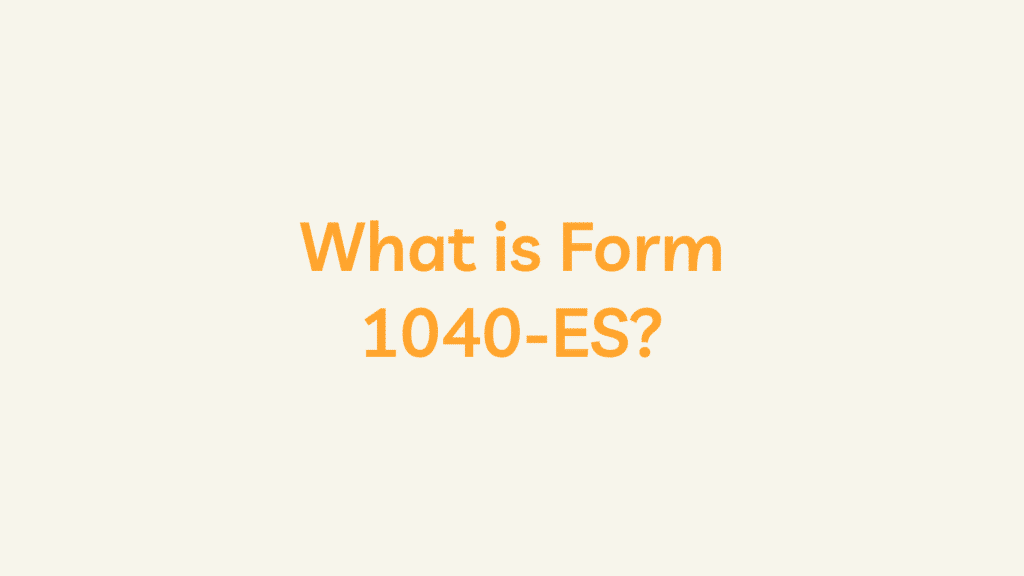Introduction
The U.S. tax system is a labyrinth of regulations and forms, and navigating through it can be particularly challenging for those with sources of income not subject to regular withholding. Form 1040-ES, the Estimated Tax for Individuals form, emerges as a crucial tool for taxpayers who need to calculate and remit their estimated tax liability.
Understanding the Essence of Form 1040-ES
Form 1040-ES is essentially the IRS’s mechanism to ensure that individuals, particularly those who don’t have taxes withheld from their income, meet their tax obligations throughout the year. This group includes self-employed individuals, freelancers, and those with substantial income from sources such as rental properties or investments.
Determining Who Needs to File Form 1040-ES
The need to file Form 1040-ES arises for individuals who fall into one or more of the following categories:
- Self-Employment or Freelance Income: If you’re your own boss or engage in freelance work, your income typically lacks the automatic tax withholding that employees experience. The Form becomes a way to fulfill your tax obligations.
- Income Without Withholding: Income from various sources like rental properties or investments might not have taxes withheld. Individuals in this situation must use the Form to calculate and pay their estimated tax liability.
- Anticipated Tax Owing: If you expect to owe at least $1,000 in taxes when filing your annual tax return, you should consider filing the Form. This helps prevent underpayment penalties and ensures a smoother tax process.
The Timing and Process of Filing Form 1040-ES
Form 1040-ES operates every quarter, with deadlines as follows:
- First Quarter (January 1 – March 31): April 15
- Second Quarter (April 1 – May 31): June 15
- Third Quarter (June 1 – August 31): September 15
- Fourth Quarter (September 1 – December 31): January 15 of the following year (or the next business day if it falls on a weekend or holiday)
Taxpayers have several options for making estimated tax payments, including mail, phone, or the IRS Direct Pay system online.
The Nitty-Gritty of Form 1040-ES Completion
Form 1040-ES comprises four quarterly payment vouchers and an accompanying worksheet. The worksheet is a comprehensive tool that guides individuals through the process of estimating their annual income and deductions. By working through this worksheet, taxpayers accurately estimate their total tax liability for the year. The resulting amount is then divided into four equal quarterly payments, aligning with the payment schedule.
Penalties for Non-Compliance
Failure to file Form 1040-ES or underpaying estimated taxes carries penalties and interest charges. To avoid these additional costs, it’s crucial for taxpayers to meticulously estimate their tax liability and make timely payments.
Conclusion
In conclusion, Form 1040-ES isn’t just a form; it’s a proactive strategy for managing tax liabilities throughout the year. By embracing this form and its quarterly payment system, individuals can steer clear of end-of-year surprises and comply with IRS regulations. While the process may seem intricate, careful planning, accurate estimation, and deadline adherence can help individuals successfully navigate the estimated tax payment system.
In essence, the Form empowers taxpayers to take control of their tax responsibilities, fostering a sense of financial responsibility and ensuring a smoother tax journey.
